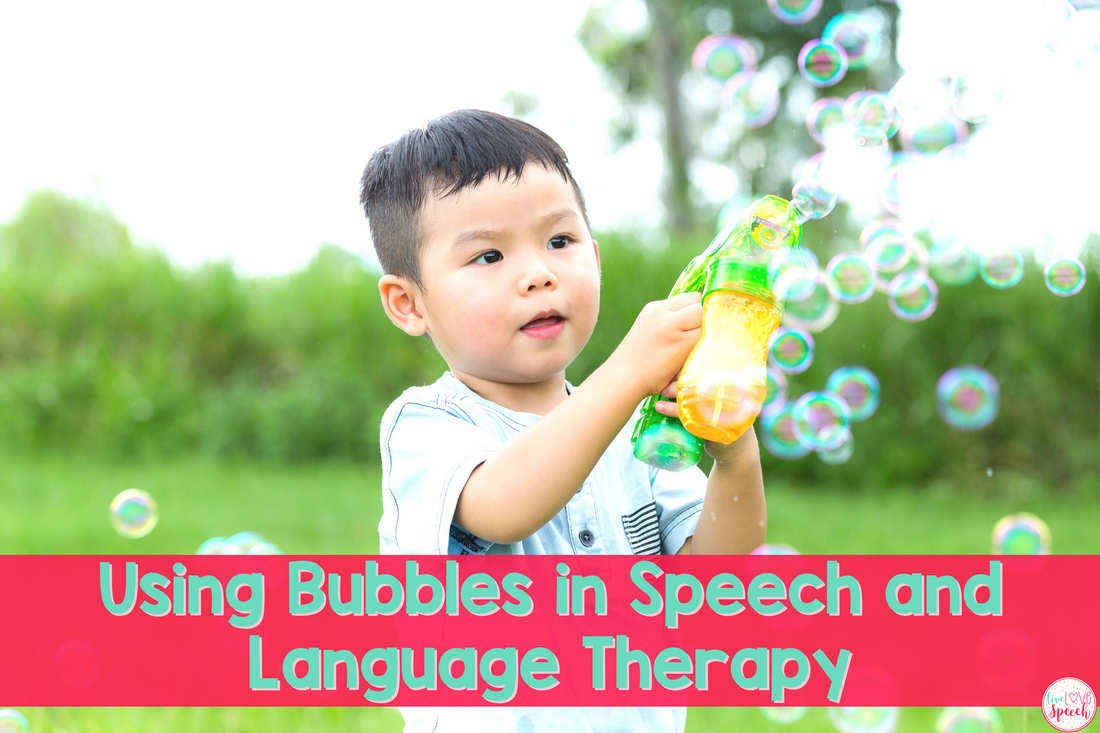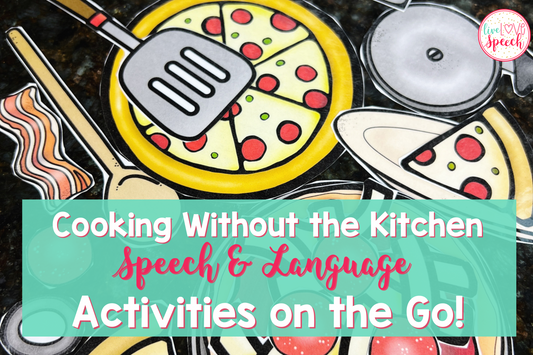
Bubbles are a fan favorite in my therapy sessions, and it's easy to see why! They’re low-tech, affordable, and completely captivating for kids. Whether we're working on speech sounds or taking turns, bubbles can engage students in meaningful ways. Plus, I like to add a fun twist by creating Bubble Prints—a creative activity that also supports speech and language development!
The Benefits of Using Bubbles in Speech Therapy
Bubbles aren't just for fun—they’re a powerful tool for supporting speech and language development. When children blow bubbles, they are practicing oral motor skills like lip rounding and breath control, both of which are important for producing speech sounds. For example, blowing bubbles helps students strengthen the muscles needed for sounds like /p/, /b/, and /m/.
Additionally, bubbles can be used to work on language development. They provide a natural opportunity for students to make requests, whether they’re asking for “more” or signaling that they need help opening the bottle. This can be done verbally, through sign language, or with gestures, depending on each student’s current skill level. Bubbles also lend themselves to working on turn-taking, expanding vocabulary, and following directions—all crucial aspects of communication.

1. Bubble Prints: A Creative Speech Therapy Activity
Materials Needed:
- Bottles of bubbles (I used 5)
- Food coloring (red, blue, green, purple, and orange)
- Small plastic cups
- Card stock (cut in half)
- Disposable tin trays (to keep the mess contained!)
How to Prepare: I added a few drops of food coloring to the bubble solution in each bottle to create a variety of colorful bubbles. Each student got a piece of card stock with their name on it and a tin tray to work on. This way, they could choose their favorite colors and make their unique bubble prints!
Before diving into the creative part, we practiced lip rounding, taking deep breaths, and learning how to blow bubbles effectively. Once they had the hang of it, the kids blew colorful bubbles onto the card stock, creating vibrant and abstract prints.
I let the prints dry overnight, and the next day, each student took home their masterpiece!
2. Visual Support with Bubbles: Integrating Visuals for Language Development
In my sessions, I often use visual supports to help children connect objects with their speech goals. One example is the bubbles visual from my Visuals for Toys resource.
This resource provides images of toys (like bubbles) alongside key vocabulary and sounds, allowing children to make meaningful connections between the items they’re playing with and the language they’re learning.
For example, while students are blowing bubbles, the visuals for words like “pop,” “blow,” and “more” help them understand and use relevant vocabulary. These prompts encourage students to request, describe, and comment on their actions, supporting language growth in a structured way. Additionally, the resource includes speech sound visuals (like CV, VC, and CVC words), which can be particularly helpful when working on articulation through playful bubble activities.
By integrating this resource into bubble play, therapists can target key goals such as lip rounding for sounds like /b/ and /p/ and turn-taking for social communication, all while keeping students engaged with a familiar and motivating activity.
What’s included in the Visuals for Toys resource:
- Core vocabulary tailored to activities like blowing bubbles (e.g., “pop,” “blow,” “more”).
- Visuals for speech sounds (CV, VC, CVC words, stops, fricatives) that can be used alongside bubble play.
- Interactive pieces to keep students involved and track their progress.
- Data sheets to easily monitor student growth and skill acquisition.
- AND MORE!
This resource makes bubble play even more effective by providing a visual, structured approach to targeting speech and language skills. It bridges the gap between play and learning, making each session more productive and fun.
Click here to explore more about the Visuals for Toys resource and how it can enhance your therapy sessions.
3. Creative Ways to Incorporate Bubbles in Therapy
As Heidi from Mommy Speech Therapy outlines, there are numerous ways to use bubbles to promote language development. Here are her 10 ideas to inspire your therapy sessions:

- Promote Eye Contact – Engage students with bubbles by waiting for eye contact before blowing more.
- Encourage Requests – Screw the lid on tight and hand the bubbles back to encourage students to ask for help.
- Teach Signs – Incorporate signs for "open," "more," "please," and "again" during bubble play.
- Model Speech Sounds – Use bubbles to model sounds like /m/ for "more," /b/ for "bubbles," and /p/ for "pop."
- Expand Vocabulary – Work in new words such as "bubbles," "want," "again," and "all done."
- Practice Turn-Taking – Use bubbles to teach conversational turn-taking with phrases like "my turn" and "your turn."
- Target Lip Rounding – Encourage lip rounding for sounds like /w/, /oo/, and /o/ while blowing bubbles.
- Strengthen Tongue Positioning – Bubble-blowing helps strengthen the tongue for sounds like /k/, /g/, and "ng."
- Support Abdominal Strength – Blowing bubbles in long streams helps build strong abdominal muscles for sustained speech.
- Most Importantly: Have Fun! – Kids love bubbles, and fun is at the heart of learning!
Why Bubbles Are an Essential For Speech Therapy
Bubbles may seem simple, but their ability to captivate children while targeting important speech and language skills makes them an essential tool in therapy. From strengthening oral motor skills to encouraging language development and social interactions, bubbles offer endless opportunities for learning through play.
Combined with visual supports like those in my Visuals for Toys resource, bubbles can become a powerful part of any speech therapist’s toolkit, helping kids engage, communicate, and succeed.






1 comment
Just learned other needs of using bubbles for speech therapy. I use on the children I am working with and waooo seen improvement.